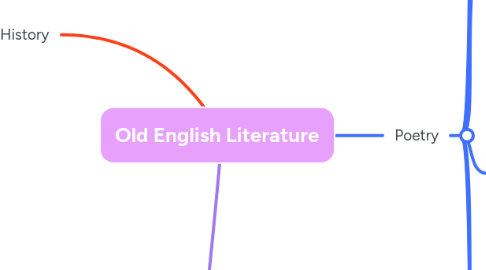
1. History
1.1. Celts
1.1.1. Anglo-Saxon
1.1.1.1. an alphabet of runes
1.1.1.2. angular characters originally developed for scratching onto wood or stone
1.1.1.3. rapidly adopted the new Roman alphabet
1.1.2. Celtic
1.1.2.1. an alphabet of runes
1.1.2.2. angular characters originally developed for scratching onto wood or stone
1.2. Romans
1.2.1. Latin
1.2.1.1. only used by the educated ruling classes
1.2.1.2. a minor influence on the English language
1.2.1.3. albeit substantially altered and adapted for the Anglo-Saxon ear and tongue
1.3. Germanic settlements
1.3.1. Anglo-Saxon
1.3.2. Jute
1.4. Vikings
1.4.1. Old Norse
1.4.1.1. 1% English today
1.5. Normans
1.5.1. Anglo-Norman
1.5.2. Old French
1.5.3. Latin
1.5.3.1. for services and literary activities
1.6. Renaissance mixing
1.6.1. Latin
1.6.2. French
1.6.3. Greek
1.6.4. Italian
1.7. Empire imports
1.7.1. Hirdi
1.7.2. Persian
1.7.3. Arabic
1.7.4. Turkish
1.7.5. Malay
1.7.6. American English
2. 7 000 words today
2.1. the official language of the state
2.2. language of the ruling class
3. Language
3.1. one particular type of poetic meter
3.1.1. Germanic heroic ideals
3.1.2. Anglo-Saxon lore
3.1.3. Christian spirituality
3.1.4. romance
4. Poetry
4.1. types
4.1.1. the heroic Germanic pre-Christian
4.1.2. the Christian
4.2. features
4.2.1. cholarly nature
4.2.2. accompanied by lyre music
4.2.3. it is based on modern analysis
4.2.4. is based upon accent, alliteration, the quantity of vowels, and patterns of syllabic accentuation
4.2.5. an oral craft
4.2.6. most poets are anonymous
4.3. poets
4.3.1. Caedmon
4.3.1.1. the father of Old English poetry
4.3.1.1.1. the poem "Hymn"
4.3.2. Aldhelm
4.3.2.1. is known through William of Malmesbury
4.3.2.1.1. De creatura
4.3.2.1.2. Grammar
4.3.2.1.3. Homilies
4.3.2.1.4. Lives of the Saints
4.3.2.2. his proses are natural, easy and are very often alliterative
4.3.3. Cynewulf
4.3.3.1. The Fates of the Apostles and Elene
4.3.3.1.1. found in the Vercelli Book
4.3.3.2. Christ II and Juliana
4.3.3.2.1. found in the Exeter Book
4.4. theory
4.4.1. by Eduard Sievers (1885)
4.4.1.1. five distinct alliterative patterns
4.4.2. by John C. Pope (1942)
4.4.2.1. musical notations which has had some acceptance
4.5. poetic figures
4.5.1. the Kenning
4.5.1.1. the sea is called the swan's road and Litotes
4.5.2. a dramatic understatement employed by the author for ironic effect.
4.5.3. heroic figures
4.5.3.1. Widsith
4.5.3.1.1. contains a catalogue of names and places associated with valiant deeds
4.5.3.2. Deor
4.5.3.2.1. in the style of Consolation of Philosophy, applying examples of famous heroes
4.6. the epic Beowulf
4.6.1. set in Scandinavia
4.6.1.1. in Sweden and Denmark
4.6.2. one of the oldest surviving poems
4.6.2.1. national epic status
4.6.2.2. the first epic in the English language
4.6.2.3. has been the subject of different scientific works
4.6.2.4. has inspired movies, novels, comic books
4.6.2.5. most often translated works of Old English literature
4.6.3. the writing style is quite plain and simple
4.6.4. Nowell Codex
4.6.5. the tale of Scandinavian origin
4.6.6. the story is biographical
4.7. manuscripts
4.7.1. the Caedmon manuscript
4.7.2. Exeter Book
4.7.3. Vercelli Book
4.7.4. the manuscript Nowell Codex
4.8. heroic poems in fragments
4.8.1. The Fight at Finnsburh
4.8.1.1. one of the battle scenes in Beowulf
4.8.2. Waldere
4.8.2.1. a version of the events of the life of Walter of Aquitaine.
